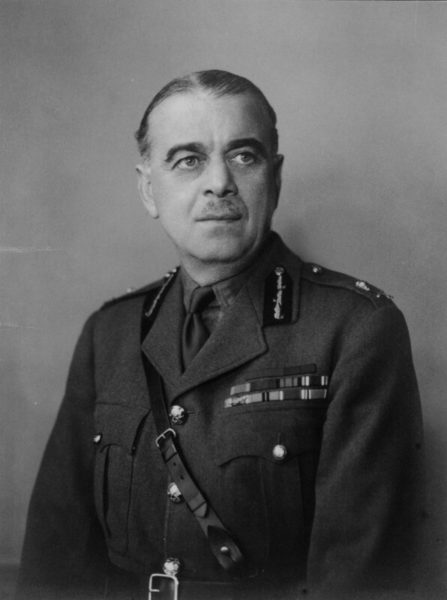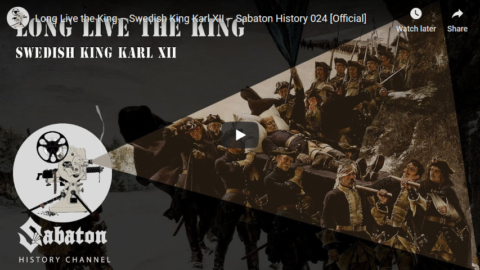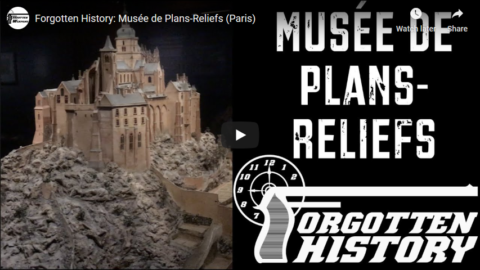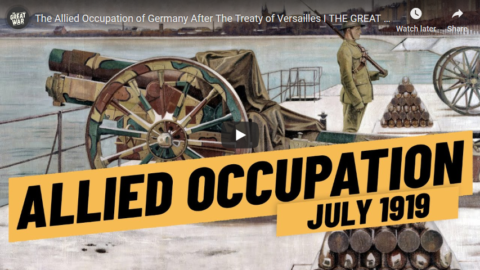Why do we use spices in our foods? In thinking about this question keep in mind that (1) other animals don’t spice their foods, (2) most spices contribute little or no nutrition to our diets, and (3) the active ingredients in many spices are actually aversive chemicals, which evolved to keep insects, fungi, bacteria, mammals and other unwanted critters away from the plants that produce them.
Several lines of evidence indicate that spicing may represent a class of cultural adaptations to the problem of food-borne pathogens. Many spices are antimicrobials that can kill pathogens in foods. Globally, common spices are onions, pepper, garlic, cilantro, chili peppers (capsicum) and bay leaves. Here’s the idea: the use of many spices represents a cultural adaptation to the problem of pathogens in food, especially in meat. This challenge would have been most important before refrigerators came on the scene. To examine this, two biologists, Jennifer Billing and Paul Sherman, collected 4578 recipes from traditional cookbooks from populations around the world. They found three distinct patterns.
1. Spices are, in fact, antimicrobial. The most common spices in the world are also the most effective against bacteria. Some spices are also fungicides. Combinations of spices have synergistic effects, which may explain why ingredients like “chili power” (a mix of red pepper, onion, paprika, garlic, cumin and oregano) are so important. And, ingredients like lemon and lime, which are not on their own potent anti-microbials, appear to catalyze the bacteria killing effects of other spices.
2. People in hotter climates use more spices, and more of the most effective bacteria killers. In India and Indonesia, for example, most recipes used many anti-microbial spices, including onions, garlic, capsicum and coriander. Meanwhile, in Norway, recipes use some black pepper and occasionally a bit of parsley or lemon, but that’s about it.
3. Recipes appear to use spices in ways that increase their effectiveness. Some spices, like onions and garlic, whose killing power is resistant to heating, are deployed in the cooking process. Other spices like cilantro, whose antimicrobial properties might be damaged by heating, are added fresh in recipes.
Thus, many recipes and preferences appear to be cultural adaptations adapted to local environments that operate in subtle and nuanced ways not understood by those of us who love spicy foods. Billing and Sherman speculate that these evolved culturally, as healthier, more fertile and more successful families were preferentially imitated by less successful ones. This is quite plausible given what we know about our species’ evolved psychology for cultural learning, including specifically cultural learning about foods and plants.
Among spices, chili peppers are an ideal case. Chili peppers were the primary spice of New World cuisines, prior to the arrival of Europeans, and are now routinely consumed by about a quarter of all adults, globally. Chili peppers have evolved chemical defenses, based on capsaicin, that make them aversive to mammals and rodents but desirable to birds. In mammals, capsicum directly activates a pain channel (TrpV1), which creates a burning sensation in response to various specific stimuli, including acid, high temperatures and allyl isothiocyanate (which is found in mustard or wasabi). These chemical weapons aid chili pepper plants in their survival and reproduction, as birds provide a better dispersal system for the plants’ seeds than other options (like mammals). Consequently, chilies are innately aversive to non-human primates, babies and many human adults. Capsaicin is so innately aversive that nursing mothers are advised to avoid chili peppers, lest their infants reject their breast (milk), and some societies even put capsicum on mom’s breasts to initiate weaning. Yet, adults who live in hot climates regularly incorporate chilies into their recipes. And, those who grow up among people who enjoy eating chili peppers not only eat chilies but love eating them. How do we come to like the experience of burning and sweating — the activation of pain channel TrpV1?
Research by psychologist Paul Rozin shows that people come to enjoy the experience of eating chili peppers mostly by re-interpreting the pain signals caused by capsicum as pleasure or excitement. Based on work in the highlands of Mexico, children acquire this gradually without being pressured or compelled. They want to learn to like chili peppers, to be like those they admire. This fits with what we’ve already seen: children readily acquire food preferences from older peers. In Chapter 14, we further examine how cultural learning can alter our bodies’ physiological response to pain, and specifically to electric shocks. The bottom line is that culture can overpower our innate mammalian aversions, when necessary and without us knowing it.
Joseph Henrich, The Secret of Our Success: How Culture Is Driving Human Evolution, Domesticating Our Species, and Making Us Smarter, 2015.
July 20, 2019
QotD: Spices
July 19, 2019
“Long Live the King” – Swedish King Karl XII – Sabaton History 024 [Official]
Sabaton History
Published on 18 Jul 2019The Sabaton song “Long Live the King” is about the aftermath of the Battle of Poltava in June 1709. The future of Sweden lay in the hands of the parliament at home while the King was in voluntary exile with the Ottomans. What followed was a dark time in Swedish history where everything was uncertain, with an unexpectedly dark ending.
Support Sabaton History on Patreon: https://www.patreon.com/sabatonhistory
Listen to Carolus Rex (where “Long Live the King” is featured):
CD: http://bit.ly/CarolusRexStore
Spotify: http://bit.ly/CarolusRexSpotify
Apple Music: http://bit.ly/CarolusRexAppleMusic
iTunes: http://bit.ly/CarolusRexiTunes
Amazon: http://bit.ly/CarolusRexAmz
Google Play: http://bit.ly/CarolusRexGooglePlayCheck out the trailer for Sabaton’s new album The Great War right here: https://www.youtube.com/watch?v=HCZP1…
Hosted by: Indy Neidell
Written by: Markus Linke and Indy Neidell
Directed by: Astrid Deinhard and Wieke Kapteijns
Produced by: Pär Sundström, Astrid Deinhard and Spartacus Olsson
Creative Producer: Joram Appel
Executive Producers: Pär Sundström, Joakim Broden, Tomas Sunmo, Indy Neidell, Astrid Deinhard, and Spartacus Olsson
Maps by: Eastory
Edited by: Iryna Dulka
Sound Editing by: Marek KaminskiEastory YouTube Channel: https://www.youtube.com/channel/UCEly…
Archive by: Reuters/Screenocean https://www.screenocean.com
Music by Sabaton.An OnLion Entertainment GmbH and Raging Beaver Publishing AB co-Production.
Sources:
– Photo of the bullet
– Bairuilong on Wikimedia Commons,
– Swedish National Museum© Raging Beaver Publishing AB, 2019 – all rights reserved.
From the comments:
Sabaton History
2 days ago
THREE MORE NIGHTS! I think that most of you expected this episode to be from the new album that will be released next Friday, but as we all like a little unexpected Sabaton every now and then, we went with the 18th century instead. While we (of course) will continue with these videos, it feels like we have been working towards the 19th of July ever since we started this channel in February this year. Thank you all for being a part of this journey! We mean it when we say that this wouldn’t have been possible without all of you who watch our videos and especially those who support us on Patreon!
Forgotten History: Musée de Plans-Reliefs (Paris)
Forgotten Weapons
Published on 18 Jul 2019http://www.patreon.com/ForgottenWeapons
Cool Forgotten Weapons merch! http://shop.bbtv.com/collections/forg…
Hidden away up on the 4th floor of the Paris Army Museum (in Les Invalides) is the rather unexcitingly-named Musée de Plans-Reliefs. Up here in the dark is a collection of strategic dioramas dating back some 350 years. French King Louis XIV created a workshop to build these 1:600 sale models of the major fortifications around the French coast as a tool for planning military actions. Napoleon resumed the practice in the 1800s, and today the collection includes some 100 different models. Not all of these are on display, but they are quite large and intricately detailed. Truly a hidden gem of military history in the attic of the museum. If you have an opportunity to visit the Paris Musée d’Armée, don’t miss the chance to take an hour or so to see these!
http://www.museedesplansreliefs.cultu…
Contact:
Forgotten Weapons
PO Box 87647
Tucson, AZ 85754
Swiss 1929 Simplified Luger (Yes, Swiss and Simplified)
Forgotten Weapons
Published on 15 May 2019http://www.patreon.com/ForgottenWeapons
Cool Forgotten Weapons merch! http://shop.bbtv.com/collections/forg…
Switzerland was the first nation to adopt the Luger as a service pistol, and they purchased them DWM in Germany from 1900 until 1914. World War One stopped deliveries, of course, and after the war the Swiss opted to begin their own production at Waffenfabrik Bern. These Swiss Lugers have become known as the model 06/24 by collectors, and were made until 1933. During that time, Bern was looking for ways to simplify and economize their production, and these efforts came together with the development of the Model 1929. It actually entered production in 1934, and was made until 1947 with a total of about 28,000 made for the military and about 1,900 made for the civilian market.
The main mechanical change to the 1929 pattern was a lengthening of the grip safety. Other changes included simplifying the profile of the front strap of the grip, removing knurling and serrations on the controls, and only serializing four parts. A production date stamp was also added to the inside of the frame, however.
Contact:
Forgotten Weapons
PO Box 87647
Tucson, AZ 85754
July 18, 2019
Choose the best wood for your project
Rex Krueger
Premiered 4 hours agoMore video and exclusive content: http://www.patreon.com/rexkrueger
Get t-shirts, plans, and hoodies: http://www.rexkrueger.com/store
Follow me on Instagram: @rexkruegerGet my woodturning book: http://www.rexkrueger.com/book
Neil McKinlay and his podcast: https://www.youtube.com/channel/UCrVi…
With the Grain: A Craftsman’s Guide to Understanding Wood, Christian Becksvoort (Lost Art Press): https://lostartpress.com/collections/…
Want to get woodworking? Check out the ultra-basic, ultra-cheap, Woodwork for Humans Series: https://www.youtube.com/playlist?list=PLR_8ISkKkV7ky1wbbBUkE3-kwH6LRRWY1
Woodwork for Humans Tool List (affiliate):
Stanley 12-404 Handplane: https://amzn.to/2TjW5mo
Honing Guide: https://amzn.to/2TaJEZM
Green buffing compound: https://amzn.to/2XuUBE2
Cheap metal/plastic hammer for plane adjusting: https://amzn.to/2XyE7Ln
Spade Bits: https://amzn.to/2U5kvML
Metal File: https://amzn.to/2CM985y (I don’t own this one, but it looks good and gets good reviews. DOESN’T NEED A HANDLE)
Block Plane Iron (to make a scrub plane): https://amzn.to/2I6V1vh
Vaughn Bear Saw: https://amzn.to/2WoIzLP
Dewalt Handsaw: https://amzn.to/2IAHX1Z
Stanley Marking Knife: https://amzn.to/2Ewrxo3
Hacksaw: https://amzn.to/2LOpQ9X
Hex Shaft Drill Bits: https://amzn.to/2LJZg1I
(These will fit a bit-brace)
Countersink: https://amzn.to/2LMuvZN
Small File: https://amzn.to/2LJDs6k (needs a handle)
My favorite file handles: https://amzn.to/2TPNPpr
Andrew Coyne interviews NATO Secretary General Jens Stoltenberg
In the National Post, Andrew Coyne discusses NATO, Donald Trump, and Russia with the current Secretary General of NATO, Jens Stoltenberg:

General Hastings “Pug” Ismay, later the first Secretary General of NATO during his military service as Winston Churchill’s chief military assistant in 1941.
Official British government photograph via Wikimedia Commons.
Throughout their term in government — and especially since Donald Trump’s victory in America’s 2016 election — Prime Minister Justin Trudeau’s Liberals have taken every opportunity to pay tribute to the “rules-based international order,” the consensus among countries that everyone’s interests are best served by following a set of rules and guiding principles that have evolved through the decades, expressed through things such as trade agreements and international alliances like the United Nations. If this consensus has a face it may be that of Jens Stoltenberg. The urbane former prime minister of Norway has been Secretary General of the North Atlantic Treaty Organization (NATO) since 2014, and through tough times for the international consensus he’s been one of the loudest voices defending it. This week he was in Canada to meet with Trudeau, to tour the Canadian Forces’ Garrison Petawawa and to discuss Canada’s NATO deployments in Latvia and Iraq. He sat down for an interview with the National Post‘s Andrew Coyne.
Q. Lord Ismay, NATO’s first secretary-general, famously defined the alliance’s mission as “keeping the Soviet Union out, the Americans in, and the Germans down.” When you hear some of the things Donald Trump says about NATO, about Article 5 (the collective defence provision) — are the Americans still in?
A. Yes. And they are more in now than they have been for a long time — meaning that they are actually increasing their NATO presence in Europe. After the end of the Cold War, Canada and the United States, for natural reasons, reduced their military presence in Europe. Because tensions went down, there was less need… Now tensions are increasing again, and both Canada and the United States are now increasing their military presence in Europe: Canada with a Canadian-led battle group in Latvia, and the United States with a battle group in Poland and also with a new armoured brigade. So what we see is that the United States is actually investing more in NATO, more military presence in Europe, more U.S. investments in infrastructure, in pre-positioned equipment, more exercises. So the message from the United States is that they are committed to NATO and we see that not only in words but also in deeds.
Q. But when you see Trump questioning the value of multilateral institutions, asserting “America First,” his chumminess with Putin, does it risk sending a signal that, if push came to shove — if Russia got up to no good in the Baltics or what have you — that America’s resolution to resist that would be less than certain?
A. For me the strongest possible signal to send is the presence of U.S. forces in Europe. The fact that we now, for the first time in the history of NATO, have U.S. troops in the eastern part of the alliance, in Poland and the Baltic countries. There is no way to send a clearer signal than that. And the Canadian troops because they are part of the picture. To have American troops in the Baltic countries sends a very clear signal that if a Baltic country is attacked it will trigger a response from the whole alliance… It’s not possible to imagine a stronger and clearer signal than that.
The Allied Occupation of Germany After The Treaty of Versailles I THE GREAT WAR July 1919
The Great War
Published on 17 Jul 2019When the Allied armies marched into German territory in late 1918 under the terms of the armistice, they were surprised to see a relatively untouched land. After the signing of the Treaty of Versailles, the Allied Occupation was made permanent and the troops settled in to stay in a country that did not want them there initially.
» SUPPORT THE CHANNEL
Patreon: https://www.patreon.com/thegreatwar
Merchandise: https://shop.spreadshirt.de/thegreatwar/» SOURCES
Leonhard, Jörn. Der überforderte Frieden. Versailles und die Welt 1918-1923 (CH Beck, 2018)
Macmillan, Margaret. The Peacemakers: Six Months that Changed the World (London: John Murray, 2001).
Le Naour, Jean-Yves. La Honte noire (Hachette, 2004).
Schröder, Joachim, Watson, Alexander. “Occupation during and after the War (Germany)” in: 1914-1918-online. International Encyclopedia of the First World War https://encyclopedia.1914-1918-online…
Roos, Julia. “Schwarze Schmach” in: 1914-1918-online. International Encyclopedia of the First World War https://encyclopedia.1914-1918-online…
Godfroid, Anne. “Occupation after the War (Belgium and France)” in: 1914-1918-online. International Encyclopedia of the First World War https://encyclopedia.1914-1918-online…
Pawley, Margaret. The Watch on the Rhine: The Military Occupation of the Rhineland, 1918-1930 (I.B.Tauris, 2007).
Hart, Keith. “A Note on the Military Participation of Siam in WWI.” Journal of the Siam Society (ndp): 133–136.
Lauter, Anna-Monika. Sicherheit und Reparationen. Die französische Öffentlichkeit, der Rhein und die Ruhr (1919-1923) (Essen: Klartext, 2006).
Krugler, Gilles. “Allemagne decembre 1918. Les premières heures de l’occupation“. In Revue historique des armées 254 (2009): 76-81. https://journals.openedition.org/rha/…
Mignon, Nicolas. “Boche, ex-ennemie ou simplement femme? Le point de vue des responsables politiques et militaires sur la question des mariages entre militaires belges et femmes allemandes pendant les occupations de la Rhénanie et de la Ruhr (1918-1929).” In Revue belge de Philologie et d’Histoire (2013) 91-4 : 1259-1283.»CREDITS
Presented by: Jesse Alexander
Written by: Jesse Alexander
Director: Toni Steller & Florian Wittig
Director of Photography: Toni Steller
Sound: Toni Steller
Editing: Toni Steller
Mixing, Mastering & Sound Design: http://above-zero.com
Motion Design: Christian Graef – GRAEFX
Maps: Daniel Kogosov (https://www.patreon.com/Zalezsky)
Research by: Jesse Alexander
Fact checking: Florian WittigChannel Design: Alexander Clark
Original Logo: David van StepholdA Mediakraft Networks Original Channel
Contains licensed material by getty images
All rights reserved – Real Time History GmbH 2019
Canada’s disputed claims to the Arctic
In the Post Millennial, Jason Unrau writes about the Canadian government’s largely unsupported claims to the Northwest Passage as Canadian territorial waters:
If Canada is serious about defending sovereignty over its Arctic archipelago, Ottawa needs to develop better infrastructure there and start with a permanent military base, says the only MP who attended the International Arctic Forum held in St. Petersburg, Russia.
“The conversation was that it’s international waters. From a Canadian perspective we lay claim to it, but the international community is really looking at it as international waters,” said David Yurdiga, Conservative MP for Fort McMurray–Cold Lake Alberta.
“There are plans to open up the Northwest Passage and connect it as part of international shipping lanes, as they call it … even the U.S. says it’s international waters.”
Canada’s jurisdiction over the waterway was last publicly questioned at the meeting of Arctic Council nations in Finland, where U.S. Secretary of State Mike Pompeo called Canada’s claim “illegitimate”.
[…]
But back in the real world, nobody cares about Canada’s claims to our Arctic archipelago, except for us, said Yurdiga. And barely a month before Scheer and Freeland duked it out on Twitter, in St. Petersburg, according to Yurdiga, only department staff attended the International Arctic Forum – not MPs, nor ministers.
“I was really shocked there was no representative from the government,” Yurdiga said. “We have international communities talking about these as international waters, and we have nobody from the Canadian government pushing back on our sovereignty. We’ve got to be an active player.”
Hand Tool Tote with Hand-Cut Dovetails | How To Build – Woodworking
Crafted Workshop
Published on 28 Feb 2017In this woodworking project, I’m building a hand tool tote using hand-cut dovetails. This project was built so that I could bring a few hand tools with me to my week-long course at the John C. Campbell Folk School (http://bit.ly/folkschool). Enjoy!
Great Hand Tool Resources:
Paul Sellers: https://www.youtube.com/user/PaulSellersWoodwork
James Wright, Wood by Wright: https://www.youtube.com/channel/UCbMtJOly6TpO5MQQnNwkCHg
Shannon Rodgers, Renaissance Woodworker: https://www.youtube.com/user/RenaissanceWW
QotD: “They might speak English, but they don’t speak Western”
[Responding to a photo of a protest sign labelled “Dumbledore wouldn’t let this happen“] I swear, it’s all you ever see from them.
But something happened to me last night, I had a kind of realization. It suddenly hit me WHY that is.
It’s because Harry Potter is literally all they collectively know.
Schools don’t teach history anymore.
They no longer teach the canon of Western literature.
They certainly don’t teach the Bible.So Millennials literally have no points of common reference. It’s not that they all just want to look like complete morons by infantilizing their political metaphor to the level of a children’s book, it’s that they have no other choice.
They’re literally bereft of the allegorical language of the West. I’m sure there’s some Harry Potter monster analogy I could use to explain it to them, how it’s like monsters have come along and literally stolen their ability to speak, their common language, and their birthright.
They can no longer express or understand the set of references we have from our past, our most prized stories, and our culture’s religious quotations. They can’t do Shakespeare, Milton, or even Mark Twain because they’ve never learned any of these while they were being taught Indonesian multicultural dancing and given participation awards. They don’t know what happened at Hastings in 1066, at Runnymede in 1215, or even at Sarajevo in 28th June 1914, because they were being given feminist diversity training instead of learning the history of their civilization. They certainly don’t know what “the least of these” refers to or where it comes from, as a recent event with a White House staffer proved.
They’ve lost the entire allegorical language of the West. They might speak English, but they don’t speak Western. To them, it’s like a foreign, dead, alien language. A set of stories they do not know.
RPGPundit, “Harry Potter and the way Millennial Leftists Don’t Even Speak Western Anymore”, The RPGPundit, 2017-02-02.
July 17, 2019
Andrew Scheer falls into carefully prepared media trap on “conversion therapy”
Chris Selley explains why federal Conservative leader Andrew Scheer is now being pilloried over his stance on banning so-called “conversion therapy”:
The day before Global ran its story, CBC reported it had “obtained” a letter the feds sent to the provinces in June asking them to ramp up efforts to outlaw preposterous and potentially dangerous so-called treatments designed to turn homosexual people into heterosexual people. “The provincial, territorial, municipal and federal governments all have roles to play to protect Canadians from the harms associated with this practice,” read the letter, signed by federal Justice Minister David Lametti among others. “The federal government is committed to doing everything within its jurisdiction to combat conversion therapy” — including, supposedly, amendments to the Criminal Code.
Global took that to Scheer, who had nothing nice to say about conversion therapy: “We will always … stand up for the rights of LGBTQ individuals and protect their rights and … we’re opposed to any type of practice that would forcibly attempt to change someone’s sexual orientation.”
Asked whether he would support a “ban,” Scheer responded precisely as opposition leaders always do in the absence of legislation: “We will wait and see exactly what is being contemplated.” After all, Scheer trenchantly noted, “this is something that this Liberal government is only now recently proposing.”
This entirely reasonable position begat the above-noted headline, and the above-noted headline begat mass outrage — including among commentators who know very well how the game is played. “Why would you allow any ambiguity about where you stand?” Global radio host Charles Adler fumed on Twitter, addressing Scheer. “Why can’t you just say this so-called therapy is peddled by charlatans. It exploits vulnerable people including children. Voluntary or coercive, it’s bogus.”
Now, if you think it’s self-evident that conversion therapy ought to be illegal in Canada, and you hold anyone who doesn’t share and proselytize that opinion in contempt, then Scheer has given you your answer. But if that’s what you think, you should be just as furious with the Liberals — probably more.
Not only is the “plan for (a) conversion therapy ban” referred to in the Global headline nothing of the sort, but rather a hitherto private and suddenly, conveniently, public letter that explicitly leaves open the question of federal jurisdiction. But the letter was sent just a few weeks after the Liberals ruled out exactly what the headline would have us believe they are now proposing!
V Bombers – Vulcan, Victor & Valiant – The Last British Bombers
Curious Droid
Published on 28 Nov 2017It took just 11 years to go from the first flight of the Lancaster Bomber in 1941 to the first flight of the VX770, the prototype Vulcan bomber in 1952. Yet the difference between them could hardly be greater, the Vulcan along with the Victor and Valiant were a new generation of the new planes known as the “V” bombers, planes for a new era and a newly, nuclear-armed Britain.
Patreon : https://www.patreon.com/curiousdroid
Paypal.me : https://www.paypal.me/curiousdroidSponsers: Drew Hendrix, Symon Hamer, Florian Hesse, Lucius Kwok, Hunter Schwisow, Pyloric, Seb Stoodley, Oscar Anderson, Peter Cote, Cody Belichesky, Mogoreanu Daniel, Douglas Gustafson, Marcus Chiado, Jorn Magnus Karlsen.
This episode’s shirt was the was the Tabla Paisley by Madcap England and is available from https://www.atomretro.com/madcap_england.
Get 10% discount with the code DROID10.Presented by Paul Shillito
Written and Researched by Andy Munzer
Additional material by Paul Shillito
Images and footage: Avro, Handley-Page, Vickers-Armstrong
Jim Debinham, Pathe.Music – Machiotil by Seclorance is licensed under an Attribution License.
Source : http://freemusicarchive.org/music/Sec…
VIA Rail’s “High Frequency Rail” proposal
In Trains, Bill Stephens outlines some of the strikes against VIA Rail Canada’s hopes for a dedicated passenger-train-only route between Toronto and Quebec City:
Last month VIA’s $4 billion plan got a $71 million boost that will fund additional feasibility studies. It shouldn’t take $71 million to figure out the plan is fatally flawed. Why? Because it won’t accomplish its chief aim: Eliminating the mind-boggling delays related to sharing tracks with Canadian National freight trains.
To be successful, passenger service needs to be fast, frequent, and dependable. VIA’s current service is faster than driving between Canada’s two biggest cities, Toronto and Montreal. It’s fairly frequent, too, with seven weekday departures between Toronto and Montreal. But it’s not dependable. On-time performance is in the low 70% range for the entire Toronto-Ottawa-Montreal-Quebec City corridor. VIA blames the late trains on interference from CN freights, primarily on the double-track route linking Toronto and Montreal.
So you can understand why VIA would lobby the Canadian government for a dedicated passenger route. Last year VIA’s Eastern Corridor, the Canadian equivalent of Amtrak’s Northeast Corridor, carried three-quarters of VIA’s entire ridership. It stands to reason that you can fill more seats with service that’s faster, more frequent, and more reliable.
[…]
Keeping passenger and freight trains on time takes a combination of operational discipline, the right track capacity, and a willingness to make it work. CN takes pride in its operational discipline, and executives say the Eastern portion of the railroad, between Chicago and Halifax, is underutilized. What’s missing, it seems, is a willingness to expedite VIA trains.
VIA needs a cooperative host railroad more than it needs a new route that would bypass intermediate population centers, face opposition from the not-in-my-backyard crowd, take years to build, and in the end would still have to rely on shared trackage in key areas.
Also a monumental problem without an apparent solution: Squeezing extra trains into Toronto Union Station and Central Station in Montreal on new approaches that would only complicate operations and increase conflicts with freight and commuter traffic.
TAB Short: US Military Railway Guns In Action
The Armourer’s Bench
Published on May 19, 2019During World War One massive railway guns were used to reach deep behind enemy lines and attack enemy infrastructure with both sides using the massive artillery pieces. In this episode Matt takes a look at some archival footage of America’s massive railway guns ranging from 10 to 16 inches.
Check out our accompanying article for more information and sources at:
https://armourersbench.com/2019/05/19/us-military-railway-guns-in-action/If you enjoy our work please consider supporting us via Patreon, TAB is a viewer supported, non-monetised channel and any help is very much appreciated!
We have some great new perks, check out our Patreon page here: https://www.patreon.com/thearmourersb…
The Answer:
According to the original footage notes the mystery item is a 60-feet tall captured German field periscope ‘claimed to have been used by the German Crown Prince during the war’.Footage:
https://catalog.archives.gov/id/24749















